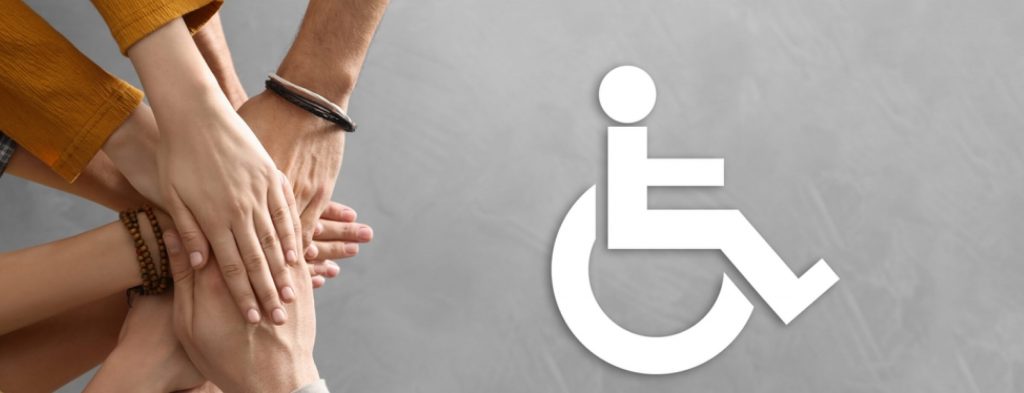What is Web Accessibility?
You may have heard the phrase “web accessibility” before, and its meaning is quite simple: web accessibility is ensuring that anyone, even if they are disabled, can access and use your website, app, or software. Technology has transformed our lives completely, so why not ensure that everyone can access it?
Of course, various relevant issues might affect web accessibility. Some users may be visually impaired and cannot see what is written on your site. In this case, your company’s website is not accessible. Web accessibility can also affect those who do not have a permanent disability, but even a temporary disability (such as a broken arm, for example).
Another example would be someone who is hard of hearing and cannot access any audio or video content on your website that may be there for educational or marketing purposes. A range of users may be affected by web accessibility: colorblind users, users with reading or learning difficulties, and more.
Web accessibility refers to the design and development of websites to make them more accessible to everyone. The goal of web accessibility is to ultimately remove any barriers that can prevent interaction with an app, website, or software.
Why Does It Matter?

The truth is that web accessibility is not important for just one reason alone, but a variety of reasons. Here’s why web accessibility, or “eAccessibility,” is integral to the future. It ultimately comes down to these main reasons:
1. Reaching more people
2. Better branding/PR
3. Minimizing legal risk
Web accessibility is important because it’s ethical, leading to a more inclusive website. There are all sorts of various disabilities of different kinds. Why wouldn’t an organization want to ensure that users can completely access and understand its website? A UK study concluded that 71% of people with a disability will simply leave your website if it isn’t accessible. That’s a lot of money your organization is leaving on the table!
If you take web accessibility seriously, it could even be good PR for your company. While most companies don’t focus on accessibility for marketing purposes, it can help your overall brand messaging and advertising strategy. If your website has an accessibility statement, for example, it can go a long way towards conveying that your organization takes the concept seriously.
Accessibility leads to better user experiences, which means that your organization may also be able to turn more users into brand advocates down the line. In the same way that organizations benefit from inclusion/diversity initiatives, embracing web accessibility can be a smart PR move for businesses of all sizes.
Web accessibility is a simple way to ensure that your website or app reaches a broader audience. For those who doubt this approach, consider that 1 in 4 Americans have a disability of some kind, according to the CDC.
Of course, some companies and organizations may not care that much about this aspect of accessibility. Still, there’s another factor to consider: the legal ramifications of your website not being accessible. That’s right: web accessibility is considered a civil right for those with disabilities.
In 2019, the website of one of the most popular artists in the world, Beyonce, was sued. The lawsuit claimed that the website failed to accommodate visually impaired users. In the same year, The Supreme Court ruled in favor of a blind man who sued Domino’s website after he was couldn’t read the website or use the mobile app to order food.
No company wants to deal with discrimination lawsuits. If your organization takes website accessibility seriously, you can minimize legal risk regarding web accessibility lawsuits, which have been on the rise in the past several years.
How to Make Your Website Accessible
Now that you understand the concept of website accessibility and realize why it’s important, you might be wondering what you can do to make sure your website or app is more accessible. Here are some simple steps that can help users navigate your website easier, improve their understanding of your goods/services:
1. Add alt text to images
2. Organize/improve headlines for more structured content
3. Offer transcriptions and captions
4. Avoid flashing content
5. Use white space
Let’s say that you have many images on your website. One of the easiest ways to improve your website accessibility is to add alt text, also known as alt tags, to your images. Adding alt text can help users who may be visually impaired understand the context of the images and why they are there. Think about an important infographic on your website: why not make sure that those with a disability can understand the infographic, even if they cannot technically “see” it?
It may sound like a slight improvement, but making better use of your headings can improve website accessibility. If your content is organized, then it means that it is easier to read, making it more accessible. Users can often feel confused about navigating your website or app without proper headlines.
If your business has invested in creating an incredible video that describes your products or services, you can still reach users who may have certain disabilities. One simple way to accomplish this is to provide both captions and transcriptions for the video content, which can also help your website get ranked AND help with user engagement.
The fourth way to ensure better website accessibility is to consider removing any flashing, blinking, or flickering content from your website or app. This video content could be hazardous for those who have epilepsy, and a content warning should be used if there are rapidly changing shots, flashing content, or strobe lights of any kind.
Lastly, white space can go a long way towards organizing your content and making it easier to read for those with disabilities. It’s about more than just making your content readable – it offers a superior user experience and breaks up content that might be too scattered or cluttered.
Why Web Accessibility Matters for Your Organization
You may still have questions about how your organization will improve through web accessibility. One answer is the fact that inclusion can lead to innovation. When your company is accessible, it helps remove barriers that can stifle innovation. There’s a good chance that your website or app will offer more usability and flexibility (across various devices).
If you own a business, there’s a good chance that you’ve heard about the importance of SEO. For those who might be unaware, “SEO” stands for search engine optimization. When you structure your website make it as accessible as possible, there’s a huge plus involved: your website may just begin to rank higher in search engines.
Lastly, web accessibility means that your website is easy to use and navigate. This is ideal even for people without disabilities, who can quickly see and understand what your website is about, what your company offers, and complete any “main tasks” on the website easily. It can also appeal to those who may not have disabilities, but particular issues (such as a sensitivity to light, for example, or an older user with poorer eyesight than most).
Web Accessibility Tools

Now that you understand the importance of web accessibility, you may be eager to improve your website, app, or software as soon as possible. But where to start, and how do you know about the best tools to use for a specific goal? Here are some web accessibility tools that you might want to consider.
WAVE
If you see enough lists of web accessibility tools, you will probably see WAVE come up time and time again. Wave offers both Firefox and Chrome extensions and is completely free, not to mention easy to use. “WAVE” stands for Website Accessibility Versatility Evaluator.
Axe
Let’s say that you are already familiar with web accessibility but want to address certain aspects of it with your website. In this case, Axe might be the better tool: it offers more customization in terms of rules, frameworks, and browsers.
Axe has been trusted by giant corporations like Google and Microsoft. The big draw here is that it’s an open-source library, and features automated testing and detailed accessibility reports.
Accessibee
Accessibee is trusted by thousands of businesses, and it only costs $49 a month. In return, you get a tool that automatically scans new and revised content that has potential web accessibility issues.
One of the benefits here is that you get both an accessibility statement and a certificate of performance. For organizations looking for more compliance, Accessibee could be a smart investment.






